Sukhoi Su-30: The Russian Air Superiority Fighter That Rivals the American F-15E Strike Eagle
The Sukhoi Su-30 (Flanker-C) is a testament to the advancements made in contemporary air combat technology, offering pilots an incredible blend of agility, speed and firepower that’s unmatched in many respects. Engaging with the Su-30 is similar to witnessing a masterclass in aerial dynamics and combat engineering, and its design reflects years of research and development that continue to push the boundaries of what’s possible in aviation technology.
Development of the Sukhoi Su-30
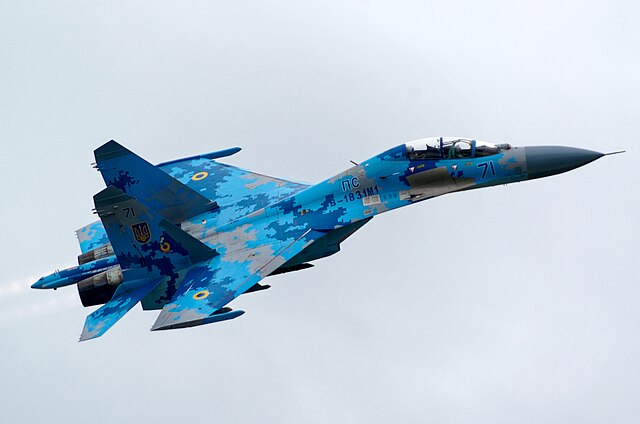
Originating from the venerable Sukhoi Su-27 (Flanker), the Su-30 was to be a more versatile fighter jet capable of fulfilling a multitude of roles, from air superiority to ground attacks. Engineers took the robust framework of the Su-27 and enhanced it, incorporating state-of-the-art avionics, a two-seat configuration for improved operational flexibility and the ability to carry a wider array of weapons. This transformation extended the capabilities of the aircraft and its operational range.
The development phase of the Su-30 saw significant collaboration with international partners, leading to various variants tailored to the specific needs of different countries. For example, the Su-30MKI, which was developed for India, includes thrust-vectoring controls and canards for enhanced maneuverability.
Each iteration of the Su-30 has been a careful balance of improving upon its predecessor’s strengths, while also introducing new features that push the boundaries of what’s possible. Through this process, the aircraft has not just evolved; it has revolutionized the landscape of military aviation.
Noteworthy Sukohi Su-30 export variants
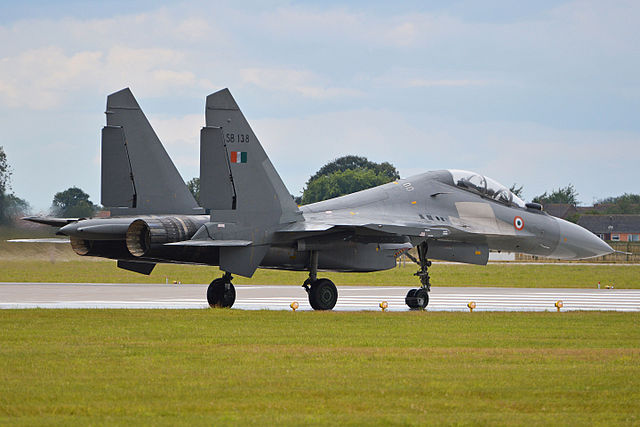
As aforementioned, the Su-30 has seen numerous variants developed, each tailored to meet specific operational requirements. The Su-30MKI makes use of technology developed for the canceled Sukhoi Su-37 and stands out with its advanced avionics and maneuverability. That being said, it also has its own issues, with India losing 11 of its then-200 units to crashes by 2019.
Various other “MK” variants have been produced for export, with countries such as Algeria, Vietnam, Indonesia and Venezuela purchasing the aircraft for their own air forces.
Another noteworthy variant, the Su-30SM, is known to boast improved radar, communication systems and ejection seats, which allow it to conduct counterstrike missions against targets at sea, in the air and on the ground. Operated by the Russian Aerospace Forces and Naval Aviation, it’s tailored to meet the demands of modern warfare. The upgraded version – the “SM2” – is equipped with better radar and stronger engines.
While not technically a variant of the Su-30, the Chinese Shenyang J-16 shares a number of similarities with the Russian fighter jet. Operated by the People’s Liberation Army Air Force, it’s very similar to the Shenyang J-11, but, instead of being flown during air superiority missions, it’s seen as more of a strike fighter.
Air superiority
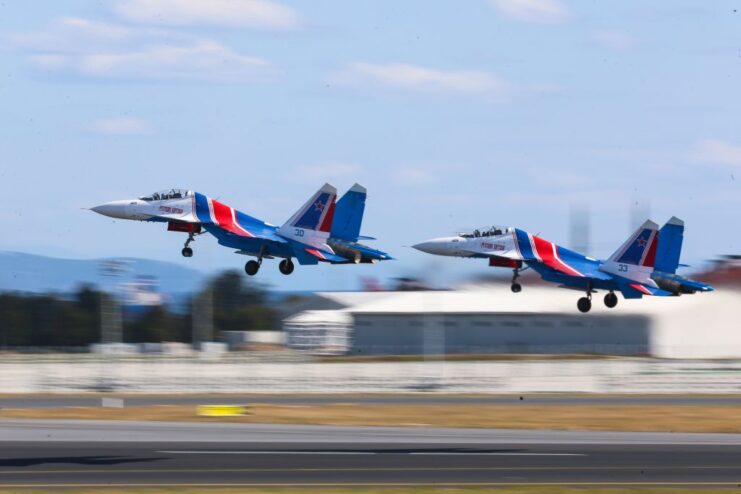
The Su-30, with its advanced avionics, maneuverability and firepower, was designed to dominate the skies. Pilots are equipped with modern technology that allows them to identify, track and engage enemy aircraft from significant distances, ensuring control of the airspace can be achieved and maintained. The integration of radar systems and beyond-visual-range missiles also enhances the aircraft’s ability to perform in air superiority missions, making it a feared opponent in aerial combat.
Moreover, the Su-30’s versatility extends beyond mere dogfighting prowess. It can operate in various weather conditions, making it a relentless guardian in the air.
The aircraft’s design incorporates thrust-vectoring engines, which give it exceptional agility, allowing pilots to fly up to Mach 2.0 and quickly change direction and altitude to disorient opponents and evade incoming threats. This, along with the Su-30’s robust electronic warfare systems, ensures it can suppress adversary air defenses and provides a significant advantage in establishing air superiority.
Sukhoi Su-30’s combat effectiveness
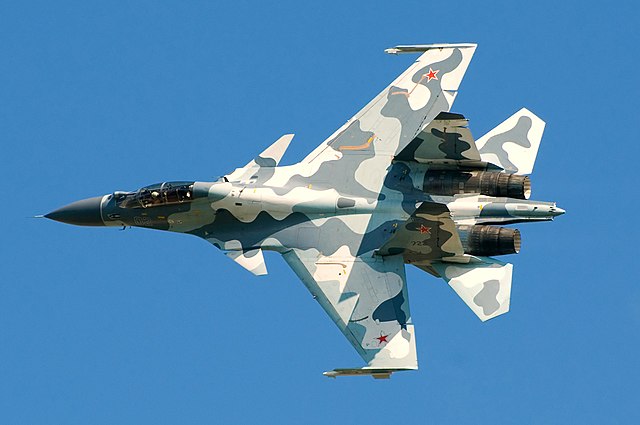
The Su-30 has seen significant technological advancements that are aimed at enhancing its combat effectiveness. One of the standout upgrades is the integration of advanced avionics, which includes a more sophisticated radar system. This not only improves the aircraft’s situational awareness, but also its capability to engage adversaries before they have a chance to react.
The inclusion of cutting-edge electronic warfare systems provides the Su-30 with enhanced protection against enemy radar and missile systems, making it a tougher target to lock onto. In addition to these improvements, the Su-30 has been equipped with state-of-the-art weapon systems that extend its strike capabilities. Precision-guided munitions and longer-range missiles have been introduced, allowing pilots better accuracy from safer distances
What does the future look like?
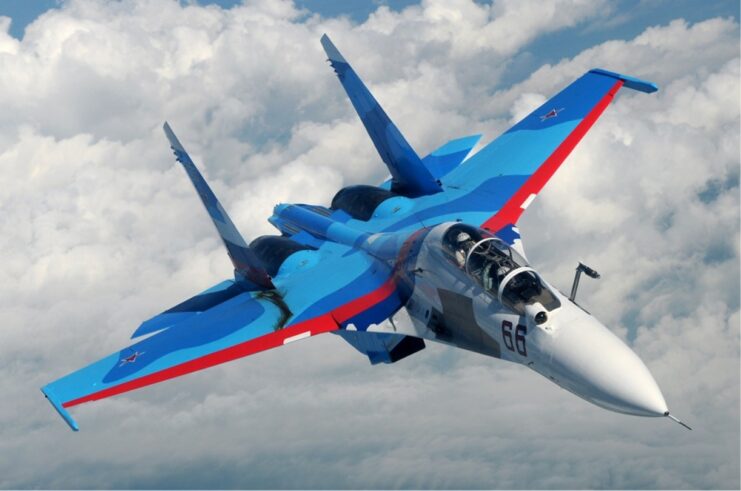
At present, the original Su-30 is only operated by the Russian Aerospace Forces. That being said, it continues to evolve and its future seems to be taking an interesting path. This multifaceted fighter jet has already proven its mettle and is expected to see upgrades. Innovations in radar technology, engine efficiency and weapons systems are among the anticipated improvements.
Moreover, there’s growing interest in how the integration of artificial intelligence (AI) could redefine the operational dynamics of the Su-30. AI could lead to more sophisticated decision-making tools, enhanced situational awareness and even the potential for unmanned operations in certain scenarios.
More from us: A US Air Force Stealth Bomber Was Once Caught Mid-Flight On Google Maps
As nations look to the future of their air defense capabilities, the Su-30’s adaptability makes it a prime candidate for forward-thinking modifications. This not only underscores the aircraft’s enduring value to its operators, but also highlights the ongoing commitment to maintaining its edge in an ever-evolving battlefield environment.
The post Sukhoi Su-30: The Russian Air Superiority Fighter That Rivals the American F-15E Strike Eagle appeared first on warhistoryonline.
Sukhoi Su-30: The Russian Air Superiority Fighter That Rivals the American F-15E Strike Eagle
Philippines Truth
Post a Comment
0 Comments